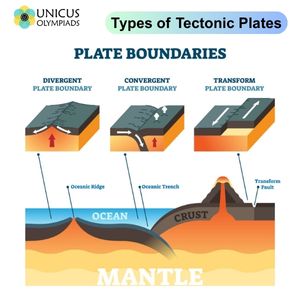

Tectonic plates are large, rigid pieces of the Earth's lithosphere (the outer shell of the Earth) that float on the semi-fluid asthenosphere beneath them. The movement and interaction of these plates play a fundamental role in shaping the Earth's surface, causing geological events like earthquakes, volcanic eruptions, and the formation of mountain ranges. In this article, we will explore what tectonic plates are, how they move, and their role in causing earthquakes and volcanoes, as well as the significant impact these natural phenomena have on our planet.
Tectonic plates are massive slabs of rock that cover the Earth’s surface. They vary in size, with some plates covering entire continents and others forming parts of the ocean floor. The Earth's lithosphere is broken into these plates, which float on the semi-fluid asthenosphere beneath them. The movement of tectonic plates is responsible for much of the dynamic nature of our planet’s geology.

Tectonic plates move due to the heat-driven processes occurring within the Earth's interior. The heat from the Earth's core causes convection currents in the semi-fluid asthenosphere beneath the lithosphere. These currents push and pull the tectonic plates in different directions. The movement of tectonic plates can range from a few millimeters to several centimeters per year, but over geological timescales, this movement is substantial and can dramatically reshape the Earth's surface.
The boundaries where tectonic plates meet are known as plate boundaries, and they are the locations where most geological activity, including earthquakes, occurs. There are three main types of plate boundaries:
Most earthquakes are caused by the sudden release of energy along faults, which are fractures or cracks in the Earth's crust caused by tectonic plate movements. When pressure from the moving plates exceeds the friction holding the fault together, the rocks on either side of the fault suddenly move, creating seismic waves that we feel as earthquakes.
Volcanoes are formed when molten rock, called magma, rises from the Earth's mantle to the surface. Tectonic plate movements are responsible for creating the conditions that allow volcanoes to form. The three main types of plate boundaries where volcanic activity is most likely to occur are:
When magma reaches the Earth’s surface through volcanic vents, it creates a volcano. Over time, successive eruptions build up layers of lava, ash, and other volcanic material, creating the iconic cone-shaped volcanoes seen around the world.